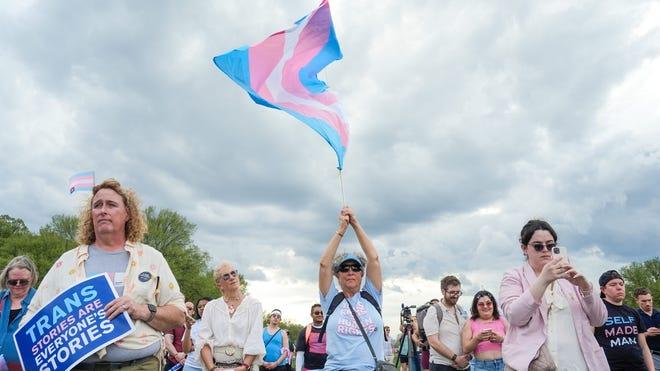The Pentagon has initiated a sweeping policy shift, beginning the immediate removal of approximately 1,000 openly transgender service members from the U.S. military, following a Supreme Court decision on Tuesday that upheld President Donald Trump’s ban on transgender individuals serving in the armed forces. The Department of Defense (DoD) announced the directive on Thursday, granting other transgender personnel 30 days to voluntarily separate or face involuntary discharge.

The policy, detailed in a memo filed in court as part of ongoing lawsuits, mandates the separation of service members diagnosed with or treated for gender dysphoria, a condition defined as psychological distress from a mismatch between one’s gender identity and biological sex. The DoD has also begun reviewing medical records to identify additional transgender service members who have not self-identified, challenging earlier estimates of up to 15,000 transgender troops. A senior defense official reported that approximately 4,240 active-duty, Reserve, and National Guard members have a gender dysphoria diagnosis.

The memo, signed by Darin Selnick, acting Under Secretary of Defense for Personnel and Readiness, states, “Service by individuals with a current diagnosis or history of, or exhibiting symptoms consistent with, gender dysphoria is not in the best interest of the Military Services and is not clearly consistent with the interests of national security.” It further asserts that the military recognizes only two sexes—male and female—and that service members must serve in accordance with their biological sex, including pronoun usage and facility access.

The policy allows limited exceptions, granting waivers on a case-by-case basis for service members who can prove they directly support “warfighting capabilities” and have not transitioned, demonstrating 36 months of stability in their biological sex without significant distress. However, these waivers impose strict conditions, such as adhering to biological sex standards for facilities and physical requirements.

The directive follows President Trump’s January 27 executive order, which described transgender service as incompatible with military standards, claiming it conflicts with the “humility and selflessness” required of service members. This marks a stricter approach than Trump’s first-term ban, which allowed some existing transgender troops to continue serving. The Supreme Court’s decision to lift a nationwide injunction enabled the policy’s enforcement, though legal challenges persist.
Advocacy groups, including SPARTA Pride and the National Center for Lesbian Rights (NCLR), condemned the policy as a “complete purge” of transgender service members, emphasizing their honorable service over nearly a decade. “No policy will ever erase transgender Americans’ contribution to history, warfighting, or military excellence,” SPARTA Pride stated. Critics argue the ban is unconstitutional and driven by animus, with U.S. District Judge Ana Reyes noting the executive order’s potentially discriminatory intent.
The policy has sparked mixed public sentiment. A Rasmussen Reports survey found 54% of likely voters approve of the ban, while a Gallup poll indicated 58% support allowing openly transgender individuals to serve, down from 71% in 2019. On X, posts reflect polarized views, with some praising the policy for upholding military standards and others decrying it as discriminatory.
The DoD estimates that between 2015 and 2024, $52 million was spent on psychotherapy, hormone therapy, and gender-affirming surgeries for transgender troops, with approximately 1,000 service members having undergone such procedures since 2014. The financial and operational impact of removing these personnel, including the loss of trained expertise, remains a point of contention, with a 2020 Palm Center study estimating replacement costs could approach $1 billion.
As the Pentagon proceeds with separations—active-duty members by June 6 and Reserve and Guard members by July 7—the policy continues to face legal scrutiny, with further court hearings scheduled. The outcome of these challenges could shape the future of transgender inclusion in the U.S. military.





